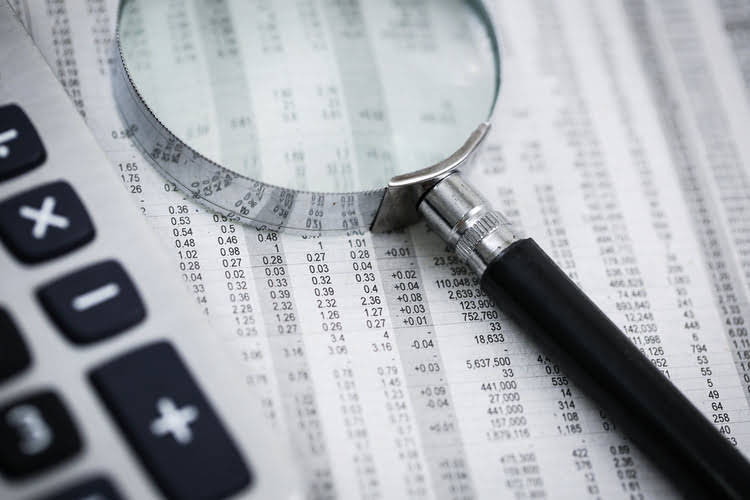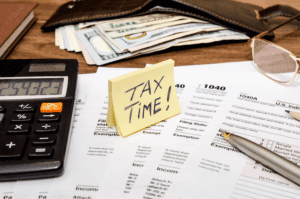What Are Fixed Assets? Key Characteristics & Examples
They are responsible for ensuring that the depreciation schedule is accurate and up-to-date. The depreciation schedule is a record of all the assets owned by the company, the date of acquisition, the cost of the asset, the useful life of the asset, and the method of depreciation used. The IRS has specific rules regarding depreciation, and it is important to understand these rules in order to properly calculate and report depreciation on your tax return. The IRS allows businesses to use a variety of methods to calculate depreciation, including the Modified Accelerated Cost Recovery System (MACRS). In conclusion, depreciation is used in different sectors to allocate the cost of assets over their useful life.
- Regular review of depreciation policies and calculations helps identify opportunities for improvement while ensuring continued compliance with evolving accounting standards and tax regulations.
- Additionally, management plans for future capex spending and the approximate useful life assumptions for each new purchase are necessary.
- The recognition of depreciation is mandatory under the accrual accounting reporting standards established by U.S.
- Categorizing depreciation as a non-cash expense is vital for accurate cash flow planning.
- It has a salvage value of $3,000, a depreciable base of $22,000, and a five-year useful life.
Overall, straight line depreciation is a commonly used and reliable method for allocating depreciation expense. Its simplicity makes it suitable for many businesses, especially when the rate of depreciation is relatively consistent over an asset’s useful life. Declining Balance Depreciation, also known as accelerated depreciation, recognizes a higher depreciation expense in the early years of an asset’s life and gradually decreases it over time. This method is based on the assumption that assets tend to lose their value more quickly in the early years and slows down as they age. When a company records depreciation expense, the value of its PP&E asset account goes down.
Other Information Regarding Depreciable Assets
However, one disadvantage of this method is that it requires accurate tracking and recording of usage or production. If the data is unreliable or difficult to obtain, it may affect the accuracy of depreciation calculations and impact financial reporting. However, one disadvantage of declining balance depreciation is that it may not be suitable for assets with a long useful life. As the depreciation expense reduces over time, there may come a point where the expense becomes negligible, resulting in an incorrect representation of the asset’s value. Let’s consider the same delivery truck mentioned earlier, but this time we will use a declining balance depreciation method with a depreciation rate of 30% per year.
Double-Declining Balance Depreciation
However, the depreciation will stop when the asset’s book value is equal to the estimated salvage value. If a company issues monthly financial statements, the amount of each monthly adjusting entry will be $166.67. Always consult with a tax professional to determine which of your business assets are eligible for depreciation. Remember that while depreciation is an accounting concept, its effects extend far beyond the balance sheet, influencing everything from daily operations to long-term strategic planning. Leveraging this knowledge can give you a competitive edge in managing your business’s finances and driving sustainable growth.
Each step is carefully explained, providing practical examples to help apply these techniques effectively in business how to calculate depreciation expense scenarios. Start calculating operating cash flow today and install ChartExpo for better visuals and improved financial insights. A favorable operating cash flow means a business is financially stable.
Capex can be forecasted as a percentage of revenue using historical data as a reference point. In addition to following historical trends, management guidance and industry averages should also be referenced as a guide for forecasting Capex. Capital expenditures are directly tied to “top line” revenue growth – and depreciation is the reduction of the PP&E purchase value (i.e., expensing of Capex).
Is Depreciation an Operating Expense?
- For example, let’s assume that among a company’s fixed assets is a bookbinding machine that can produce 3,000 books per week or about 150,000 books per year.
- This decrease in value is due to various factors such as wear and tear, obsolescence, and other external factors.
- Depreciation is the gradual decrease in the value of a company’s assets.
- Understanding depreciation and its impact on financial statements is crucial for making informed business decisions.
- Since the balance is closed at the end of each accounting year, the account Depreciation Expense will begin the next accounting year with a balance of $0.
Useful life refers to how long an asset can reasonably be expected to remain productive. The IRS guidelines help determine realistic useful lives when calculating depreciation. These types of assets are either non-tangible, held for investment, or not expected to decline in value, and therefore cannot have depreciation expense applied to them. These tangible assets must be used by the business in its central operations to produce goods or provide services in order to qualify for depreciation expense. Calculating depreciation expense using the straight-line method is pretty straightforward. Straight-line depreciation is the easiest method for depreciating property.
Salvage value plays a crucial role in depreciation calculations as it determines the amount by which an asset’s value is expected to decrease over its useful life. By subtracting the salvage value from the original cost of the asset, businesses can determine the depreciable amount that needs to be allocated over the asset’s useful life. Overall, units of production depreciation is beneficial for assets that see varying levels of usage or production throughout their useful life.
If the machine produced 40,000 units in the first year of its useful life, the depreciation expense was $16,000. If you own a piece of machinery, you should recognize more depreciation when you use the asset to make more units of product. If production declines, this method reduces the depreciation expense from one year to the next. The units of production method calculates depreciation based on the number of units produced in a particular year. When determining how to calculate straight-line depreciation, the formula shows that an asset depreciates by the same amount each year. When a company purchases an asset, management must decide how to calculate its depreciation.
Common depreciation factors and terms
Embracing technology in your depreciation calculations can lead to more accurate financial reporting, improved efficiency, and better decision-making. By choosing the right tools and implementing them effectively, you can transform what was once a tedious task into a streamlined process that adds value to your business. Acquiring assets throughout the fiscal year rather than precisely on January 1st is a common practice for business owners. Partial year depreciation ensures your depreciation calculations are accurate and reflect the actual time an asset has been in use. Remember, the key to success with this method lies in accurate tracking and realistic estimations of total lifetime production. Suppose your business purchases a piece of manufacturing equipment for $100,000.
Where the depreciation rate is a multiple of the straight-line rate, typically 2 or 3. The depreciable life of an asset depends on factors such as its nature, usage, technological advancements, and industry standards. Straight-line depreciation results in a consistent, gradually declining asset value over time. Explore how Ramp’s comprehensive suite of financial tools can enhance your business efficiency. Let us help you optimize your spend management and streamline your financial processes.
For tax purposes, many businesses opt for Declining Balance or other accelerated methods, as they allow higher depreciation deductions in the early years, reducing taxable income. Usually financial statements refer to the balance sheet, income statement, statement of comprehensive income, statement of cash flows, and statement of stockholders’ equity. In the case of an asset with a 10-year useful life, the depreciation expense in the first full year of the asset’s life will be 10/55 times the asset’s depreciable cost. The depreciation for the 2nd year will be 9/55 times the asset’s depreciable cost. This pattern will continue and the depreciation for the 10th year will be 1/55 times the asset’s depreciable cost.
By understanding the key concepts of depreciation, businesses can make informed decisions about the useful life of their assets, salvage value, and depreciation expense. Depreciation expenses are included in the income statement as an operating expense. It is recognized separately from other costs to accurately reflect the decrease in the value of assets over time. Deviations from proper depreciation accounting may result in penalties, fines, or audits, leading to potential legal and financial consequences for the business. Therefore, businesses must understand the tax regulations and seek professional advice if needed to ensure compliance and accurate reporting of depreciation expenses. So in summary, depreciation expense reduces net income while accumulated depreciation reduces the carrying value of fixed assets.
Calculating depreciation allows businesses to match the expense of using up fixed assets to the revenue those assets generate each year. Depreciation expenses represent the allocation of a tangible asset’s cost over its useful life. When a business buys an asset, it doesn’t expense the entire cost immediately. Instead, it spreads the cost over several years, aligning with the revenue the asset helps generate. Calculating depreciation expense is a crucial skill for business owners seeking to accurately track asset value over time. This fundamental accounting practice significantly impacts financial reporting and decision-making processes, regardless of company size.
The asset must also have a finite usage or run out at a defined point in the future. For an asset to be depreciated for tax purposes, it must meet the criteria set forth by the IRS. Knowing these terms can help you understand and calculate the impact of depreciation on your assets’ values. Then, we can extend this formula and methodology for the remainder of the forecast.
By understanding and applying various methods such as straight-line, declining balance, and units of production, you can accurately allocate the cost of your assets over their useful lives. Depreciation plays a vital role in financial reporting as it provides a clear and accurate representation of an asset’s value over time. Depreciation expense is an important concept in accounting that allows businesses to allocate the cost of fixed assets over their useful lives. By recording depreciation, companies show how assets decline in value over time on their financial statements.
The concept of materiality plays a big role in how some assets are accounted for. Given the fact that a wastebasket is almost certain to last for greater than one year, it should, theoretically, be depreciated over its expected useful life. The second year of the computers’ useful life, you would divide the sum of the years (still 15) by 4, to indicate that they have four years of useful life left, but keep the rest of the equation the same. The Generally Accepted Accounting Principles (GAAP) provide guidance on how to account for depreciation.







